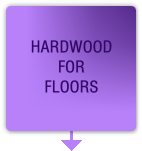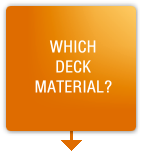 |
 |
 |
 |
Hardwood For Floors The
rich luster of wood floors adds elegance and beauty to any home. The
rich luster of wood floors adds elegance and beauty to any home.
When new technologies for wall-to-wall carpeting was made available in the 1950s, the practice of routinely constructing older homes with hardwood floors was abandoned. This also allowed builders to build homes faster and save money on labor. Adding both value and structural strength to your home, hardwood is an investment no other type of flooring can compare with. With so many new hardwood choices concerning species, color range, and gloss levels, your hardest decision will be which option to choose! If you have hardwoods under carpet, it's an easy and relatively inexpensive update to tear the carpet out and refinish your floors. Or, you can choose to install hardwoods. You have several options: Solid hardwoods - Solid hardwoods are the most expensive option. They come in planks of various lengths and are typically ¾" thick. The floors are installed as raw wood and sanded down and stained on site. The advantage is that your floors can be refinished often over the years. Solid hardwoods are not recommended over concrete slab foundations. Disadvantages are that hardwoods can not be washed with water, water leaks can cause them to bow, and direct sunlight can cause stained finishes to bleach. Engineered hardwoods - Composed of layers or plies of wood that are glued together and finished with a laminate, engineered hardwoods are finished with a final layer of hardwood that is generally between ¼" and ½" thick. The advantage of engineered hardwoods is that they are suitable for any foundation. Drawbacks are that laminated floors usually can not be refinished. Engineered hardwoods come in a variety of styles, such as long-strip hardwoods in which the flooring can be installed several "planks" at a time. Stains and Finishes If your floor comes unfinished, you need to know what kind of wood it's made of in order to select a stain, as different woods can make stain colors change tone. A good way to choose is to ask the installer for samples, or you can go to a local paint and home improvement store and view stain colors. Types of Wood The most common woods for floors are species of oak, pine, walnut, pecan, birch, beech, ash, cherry, maple, cypress and Douglas fir. |